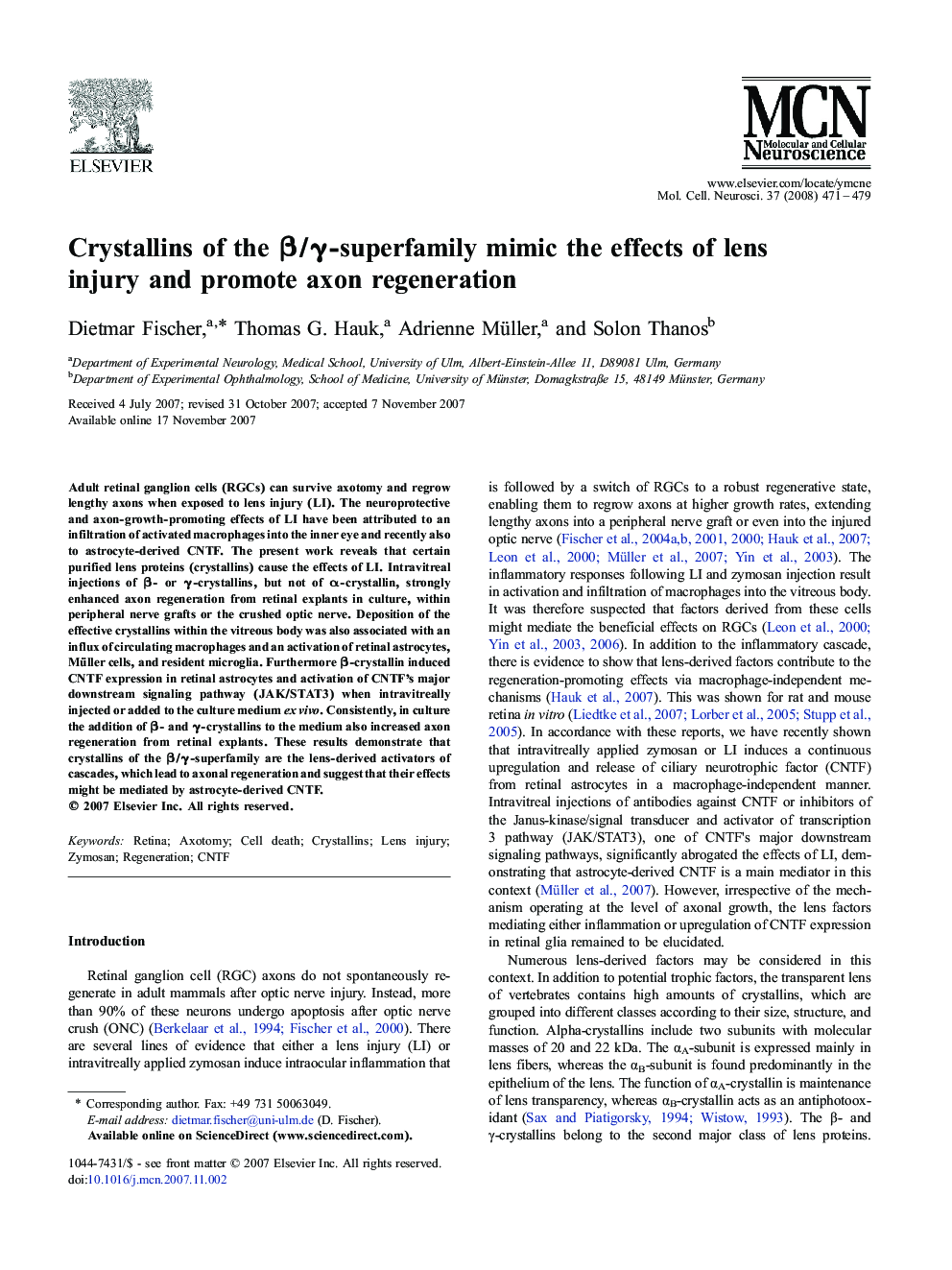| Article ID | Journal | Published Year | Pages | File Type |
|---|---|---|---|---|
| 2199241 | Molecular and Cellular Neuroscience | 2008 | 9 Pages |
Adult retinal ganglion cells (RGCs) can survive axotomy and regrow lengthy axons when exposed to lens injury (LI). The neuroprotective and axon-growth-promoting effects of LI have been attributed to an infiltration of activated macrophages into the inner eye and recently also to astrocyte-derived CNTF. The present work reveals that certain purified lens proteins (crystallins) cause the effects of LI. Intravitreal injections of β- or γ-crystallins, but not of α-crystallin, strongly enhanced axon regeneration from retinal explants in culture, within peripheral nerve grafts or the crushed optic nerve. Deposition of the effective crystallins within the vitreous body was also associated with an influx of circulating macrophages and an activation of retinal astrocytes, Müller cells, and resident microglia. Furthermore β-crystallin induced CNTF expression in retinal astrocytes and activation of CNTF's major downstream signaling pathway (JAK/STAT3) when intravitreally injected or added to the culture medium ex vivo. Consistently, in culture the addition of β- and γ-crystallins to the medium also increased axon regeneration from retinal explants. These results demonstrate that crystallins of the β/γ-superfamily are the lens-derived activators of cascades, which lead to axonal regeneration and suggest that their effects might be mediated by astrocyte-derived CNTF.
